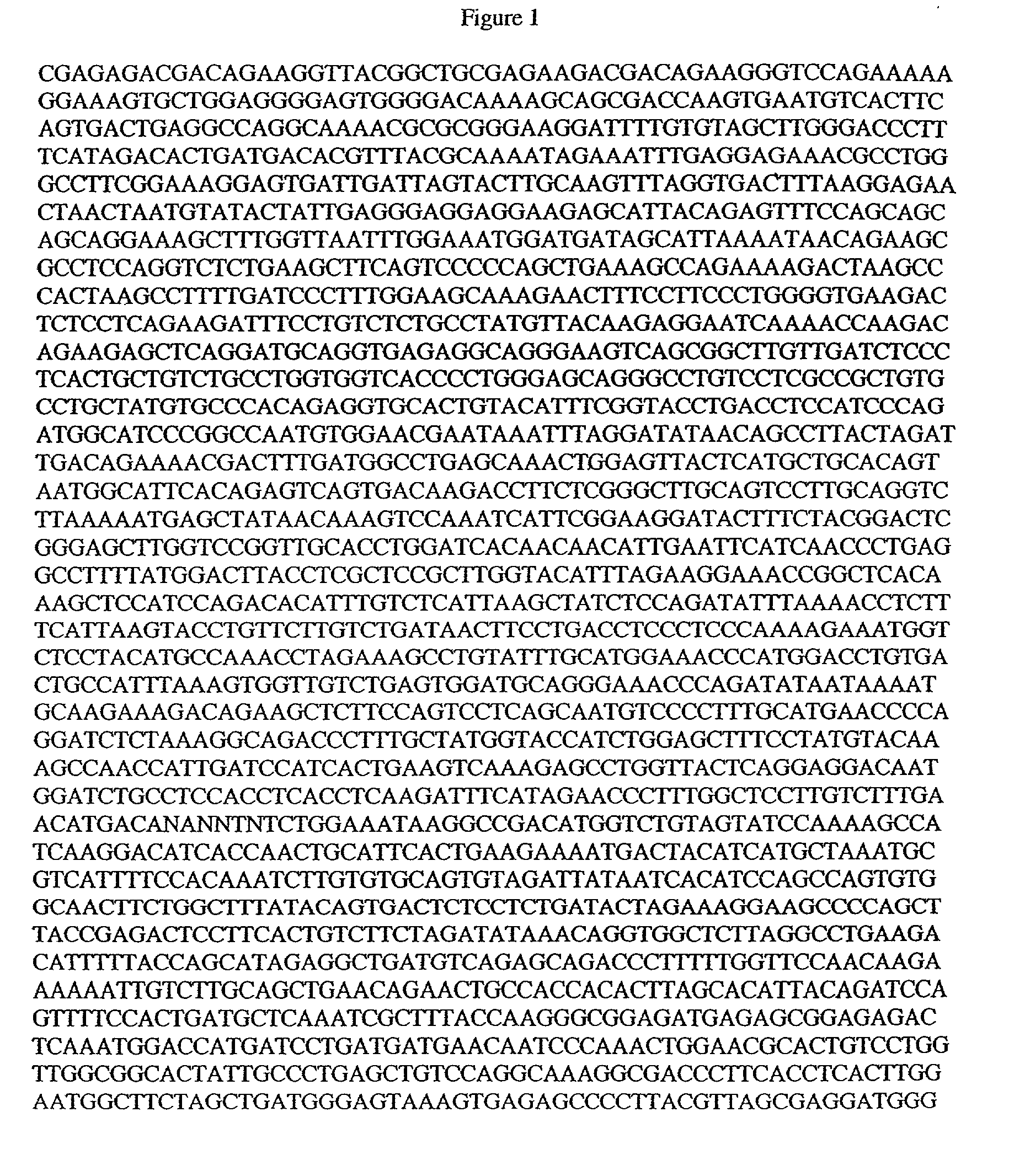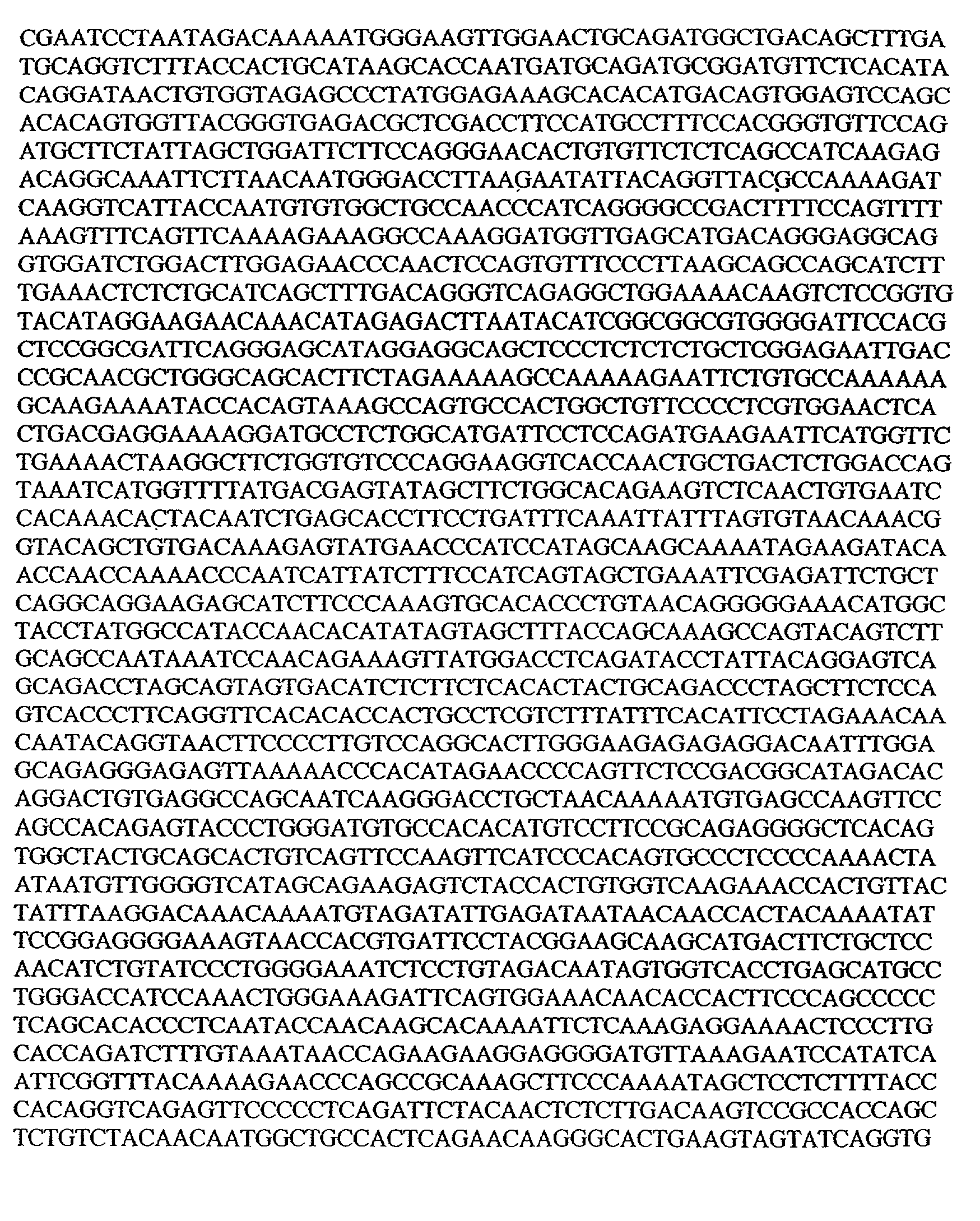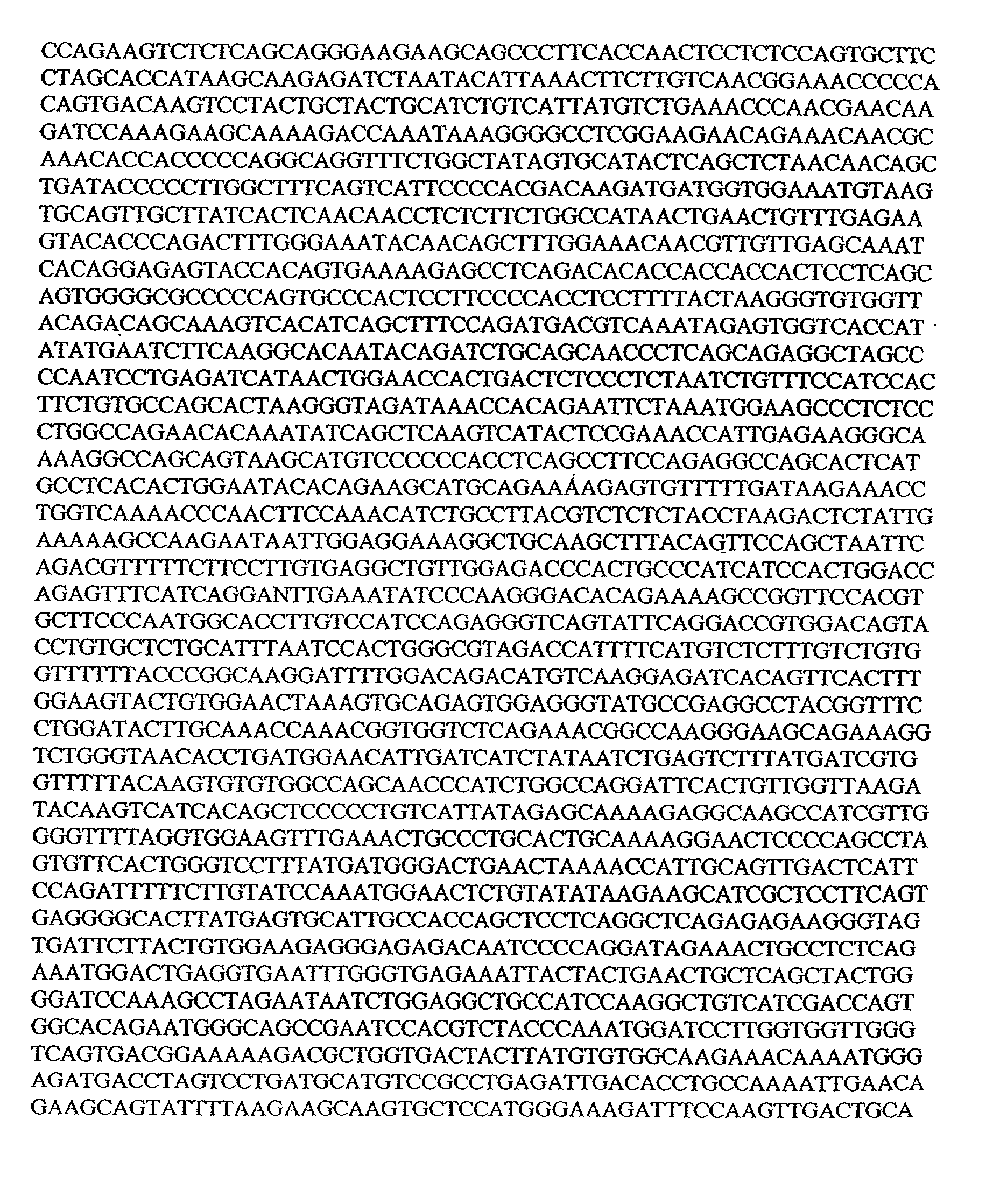Genes associated with mechanical stress, expression products therefrom, and uses thereof
- Summary
- Abstract
- Description
- Claims
- Application Information
AI Technical Summary
Benefits of technology
Problems solved by technology
Method used
Image
Examples
example 2
Isolation of Rat OCP
[0141] Primary rat calvaria cells grown on elastic membranes that were stretched for 20 minutes provided a model system for a stimulator of bone formation following mechanical force. Gene expression patterns were compared before and after the application of mechanical force.
[0142] OCP expression was upregulated approximately 3-fold by mechanical force. This was detected both by microarray analysis and by Northern blot analysis using poly (A)+RNA from rat calvaria cells before and after the mechanical stress. In rat calvaria primary cells and in rat bone extract this gene was expressed as a main RNA species of approximately 8.9 kb and a minor RNA transcript of approximately 9 kb. The hybridization signal was not detected in any other rat RNA from various tissue sources, including testis, colon, intestine, kidney, stomach, thymus, lung, uterus, heart, brain, liver, eye, and lymph node.
[0143] The partial OCP rat cDNA clone ( 4007 bp long) isolated from a rat calvari...
example 3
Full-Length OCP cDNA Construction and Expression
[0147] TNT (transcription--translation) assays were performed according to the manufacturer's instructions (Promega--TNT coupled reticulocyte lysate systems), using specific fragments taken from various regions of the gene. In all assays a clear translation product was observed. FIG. 4. The following fragments were tested:
1 TNT products Fragment Translation Frag. Location size (bp) product size (kD) Promoter 1 134-2147 2013 73 T7 2 3912-5014 1102 40 " 3 574-1513 939 34 "
example 4
The Mouse OCP Gene
[0148] Two mouse genomic Bac clones containing the mouse OCP gene promoter region and part of the coding region were identified, based on their partial homology to the 5' UTR region of the rat-608 cDNA. These clones (23-261L4 and 23-241H7 with .about.200 Kb average insert length) were bought from TIGR. FIGS. 5 and 6.
[0149] Specific primers for the amplification of a part of the mouse-OCP promoter region were designed and used for PCR screening of a mouse genomic phage library (performed by Lexicon Genetics Inc. for the Applicants). One phage clone containing part of the genomic region of the mouse 608 gene was detected and completely sequenced. The length of this clone was reported to be 11,963 bp. Parts of the physical "Lexicon" clone were re-sequenced by the inventors and corrections were made. The resequenced clone (FIG. 7) is 11967 bp long. Exon-location prediction (FIG. 8) was performed by the Applicant company's Bioinformatics unit based on the alignment of t...
PUM
| Property | Measurement | Unit |
|---|---|---|
| Fraction | aaaaa | aaaaa |
| Fraction | aaaaa | aaaaa |
| Fraction | aaaaa | aaaaa |
Abstract
Description
Claims
Application Information
 Login to View More
Login to View More - R&D
- Intellectual Property
- Life Sciences
- Materials
- Tech Scout
- Unparalleled Data Quality
- Higher Quality Content
- 60% Fewer Hallucinations
Browse by: Latest US Patents, China's latest patents, Technical Efficacy Thesaurus, Application Domain, Technology Topic, Popular Technical Reports.
© 2025 PatSnap. All rights reserved.Legal|Privacy policy|Modern Slavery Act Transparency Statement|Sitemap|About US| Contact US: help@patsnap.com



